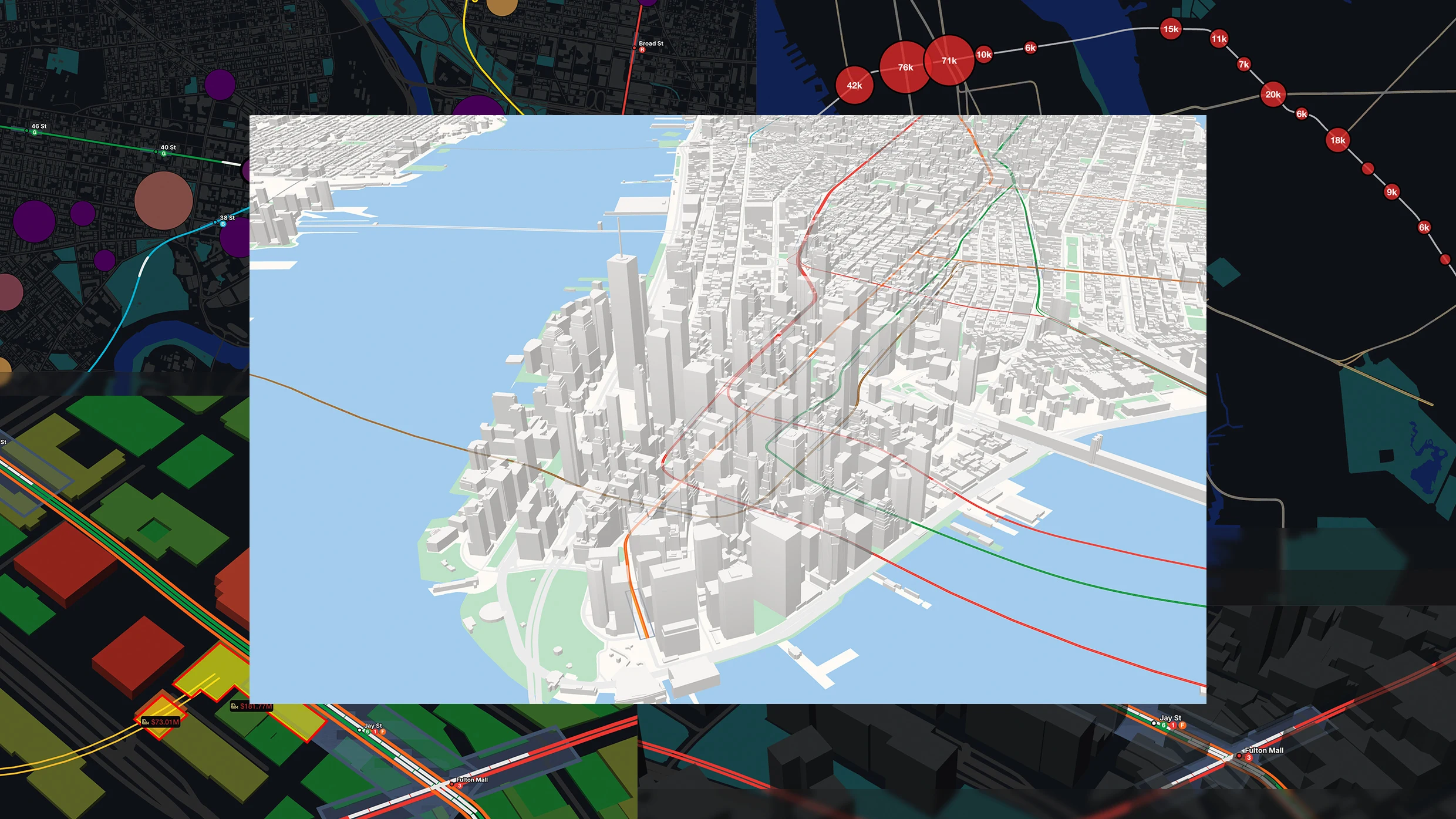
The Interborough Express line—the long-awaited light-rail link between Brooklyn and Queens in New York City—hasn’t broken ground yet. But on my computer screen, one part of the route is already operational.
A new simulation game called Subway Builder lets you design, build, and operate subway systems in 26 U.S. cities, from New York to Boston to San Francisco. The game uses real-life U.S. Census Bureau and employment data to map where residents and workers live, allowing you to simulate realistic passenger flows. Players must also contend with real-world constraints like tunnels, viaducts, existing foundations, and road layouts.
The goal is to design a subway network that gets the most people to their destinations as quickly as possible. But there’s a deeper ambition: to spark more transit-minded thinking in a country that historically has underinvested in it.
“I would secretly hope that maybe someone in power sees this and says ‘Maybe we can build something like this,’” says Colin Miller, a software engineer and creator of the game.
Subscribe to the Design newsletter.The latest innovations in design brought to you every weekday
Privacy Policy
|
Fast Company Newsletters
Building a hyperrealistic transit game
Subway Builder launched on October 9 to much fanfare in the transit community. “I’ve been playing Subway Builder for *checks notes* all night,” one user posted. “I legitimately think this game is going to start a transit revolution in America,” wrote another.
Over the years, many developers have tried to gamify transit design with offerings like MetroConnect, Brand New Subway, and Mini Metro. But few have attempted to make their simulations realistic enough to replicate real transit-planning challenges at the scale of cities like New York or Seattle.
To create Subway Builder, Miller drew on datasets from the U.S. Department of Education, the Federal Aviation Administration, and OpenStreetMap, among others. You can analyze demand statistics on a map of your chosen city; then, once you build a route, explore ridership station by station. One of the most satisfying features for me remains the constellation of red dots that represent riders commuting toward newly built stations and journeying across a network I just built.
The cost of building public transit in the U.S.
Subway Builder bills itself as hyperrealistic, but there are two key exceptions: politics and budgeting. Miller says he did not take into account the political will in any given U.S. city, nor did he calibrate the game’s budget to U.S. infrastructure costs. Instead, he used Spanish construction costs, which are among the lowest in the world. (Madrid, for example, tripled its metro network in just 12 years.) “If I had it set to realistic American construction prices, it would have made the game unplayable because you’d run out of money,” he concedes.
Players can choose to play in “sandbox mode,” which comes with no budgetary constraints. It’s the game’s “normal mode” that reveals a painful fact long criticized by experts—namely that building transit in the U.S. is mind-bogglingly expensive. On average, domestic rail transit projects cost roughly twice as much per mile in the U.S. as they do in Europe or Canada, and as much as five times more in New York City. The relatively recent Second Avenue Subway expansion, for example, cost about $2.5 billion per mile. For reference, the Los Angeles Purple Line extension cost $800 million per mile, while Madrid’s extension was $320 million per mile.
When I played the game, I quickly learned that even $3 billion would get me only three lines and about 20 stations in Brooklyn. I also learned that building a subway route is just the beginning of a long road plagued by never-ending signal failures, broken-down trains, and overall operational costs. And considering that every dollar collected from fares helps fund new routes and buy new trains, I gained a bit more sympathy for the MTA’s recent war on fare evasion.
advertisement
A tool for publication imagination
Much ink has already been spilled on the state of mass transit in the United States. Transit advocates such as Yonah Freemark have frequently lamented declining ridership and funding shortfalls in American cities. Others, like Brent Toderian, have emphasized the role of transit in shaping equitable, walkable urban environments. While public transit has recently blossomed in many U.S. cities, the system remains plagued by some of the world’s highest construction costs, red tape, political fragmentation, and a misguided adulation for the freedom that cars provide for the benefit of the few at the expense of the many.
Hayden Clarkin, a transport engineer and planner who recently published a “Hitchhiker’s Guide to Building a Lot of Subways,” argues the U.S. has the ability to build a world-class transit system but lacks the will.
“Imagine what we could achieve if we built up our institutional capacity and if leaders spent as much political capital on transit as they do on expanding highways,” he told me via email. “The systems other G7 nations have enjoyed for decades are not beyond our reach—they are a choice we can and must make.”
For Clarkin, games like Subway Builder aren’t just entertainment. He believes they could actually have real-world impact. “This is a tool for public imagination,” he says. “I’m genuinely excited for the day someone takes their in-game map to a city council meeting and says, ‘Look at what we can achieve!’”